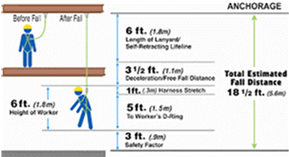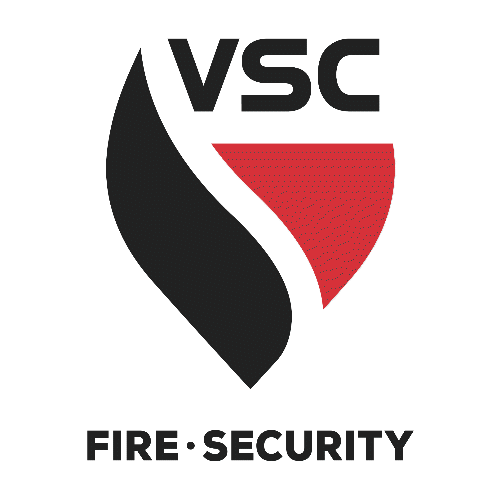HAZARD PREVENTATIVE MEASURES
Personal Fall Arrest Systems
- Note: Body belts and non-locking snap hooks are not acceptable as part of a Personal Fall Arrest System.
- The Personal Fall Arrest System (PFAS) is defined as: A system used to arrest an employee in a fall from a working level. It consists of an anchorage, connectors, a body belt, or body harness and may include a lanyard, deceleration device, lifeline, or suitable combination of these. As of January 1, 1998, the use of a body belt for fall arrest is prohibited.
- All such components shall be capable to withstand a load of at least five thousand (5,000) pounds. The total free fall shall not exceed six (6) feet. Anchorage/tie off points and components shall be capable of supporting at least five thousand (5,000) pounds or has a fall arrest system that maintains a safety factor of two with a maximum arresting force of 1,800 pounds on an employee.
- No PPE will be modified in any fashion without the express written instructions from the equipment manufacturer.
- No components of fall arrest equipment, including Harness or Lanyard, can be used for rigging, lifting, or securing material or equipment.
- PFAS and components with defect(s) will be immediately taken out of use and returned to the users Supervisor for replacement.
- Risk-Safety will be responsible for the training of employees on PFAS. This training will be conducted prior to the use of personal fall arrest equipment. Training will include:
- Understanding the application limits of the equipment.
- Proper hook-up, anchoring, and tie-off techniques.
- Demonstration of the proper use, inspection, and storage of equipment.
Criteria for Selection
PFAS are to comply with ANSI Z359.1 and will:
- Limit the maximum arresting force on a falling employee to 1,800 pounds when used with a body harness.
- Bring a falling employee to a complete stop and limit the maximum deceleration distance an employee travels to 3.5 feet.
- Have sufficient strength to withstand twice the potential impact energy of an employee free falling 6 feet, or the free fall distance permitted by the system, whichever is less.
Be rigged such that an employee can neither free fall more than 6 feet, nor contact any lower level as illustrated here:

Use and Care of Systems and System Components
VSC will require, and all employees will take responsibility for, the care and maintenance of their personal fall arrest system. Prior to each use, PFAS will be inspected by the user for:
- Mildew
- Wear
- Damage and other deterioration that may limit its protective properties.
- The anchorage point for tying will be designed, installed, and used as a complete fall arrest system that will maintain a safety factor of at least two.
- Lanyards will be attached to employees as follows:
- For Personal Fall Arrest Systems, the attachment point of a body harness will be located in the center of the wearer’s back near the shoulder level.
- The anchorage point should be above the wearer’s head.
- Only one lanyard can be connected to a harness.
- When anchorage points or length of lanyard restrict movement, a retractable lanyard can be used when extra length is needed to access the work area.
- Retractable lanyard must connect directly to the back D-ring.
- Where anchorage point of a lanyard or elevation of working height is low enough that a worker will encounter a lower surface in the event of a fall, a retractable lanyard will be used.
- The harness lanyard will not be used in combination with a retractable lanyard.
- Anchorage points used for the attachment of personal fall arrest equipment will be independent of any anchorage being used to support or suspend platforms. Anchorages will be capable of supporting at least 5,000 pounds per employee attached, or will be designed, installed, and used as follows:
- As part of a complete Personal Fall Arrest System which maintains a safety factor of at least two.
- Under the direction and supervision of a competent person.
